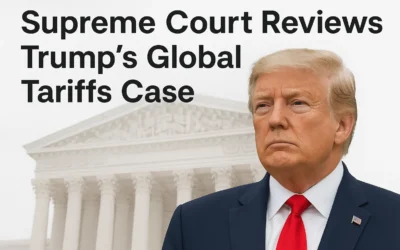In recent years, the conversation around trade policy and economic performance has intensified, particularly when examining the Trump tariff effect on U.S. GDP. While the former administration framed tariffs as a strategic move to protect American jobs and industry, the long-term economic indicators reveal a more complex – and in some cases, adverse – outcome.
The Promise Behind the Tariffs
When President Donald Trump initiated a series of tariff increases in 2018, particularly targeting Chinese imports, the stated goal was clear: to rebalance the trade deficit, revive domestic manufacturing, and reduce America’s reliance on foreign goods. Steel, aluminum, and a wide array of consumer products became subject to new duties, with China responding in kind.
This policy, popularly referred to as the U.S.-China trade war, was intended as a short-term sacrifice for long-term gain. However, macroeconomic data now paints a different picture.
GDP Growth Before and After
In 2017, prior to the implementation of large-scale tariffs, the U.S. economy grew at a healthy rate of 2.4%, with optimism buoyed by tax reforms and strong consumer spending. However, once the tariffs kicked in by mid-2018, growth started to waver. According to the U.S. Bureau of Economic Analysis:
- Q2 2018: GDP surged at 4.2%, largely due to companies stockpiling imports before tariffs took effect.
- By Q4 2019: Growth had fallen below 2.3%, showing signs of deceleration even before the COVID-19 pandemic.
The International Monetary Fund and several U.S. economic think tanks attributed part of this slowdown to decreased trade volumes, reduced business investment, and rising production costs due to higher input prices.
The Real Cost to Businesses and Consumers
While tariffs are levied on imports, it’s typically the domestic consumers and companies that bear the cost. American manufacturers depending on global supply chains faced price hikes, which were either passed on to consumers or absorbed by businesses, shrinking profit margins. For example:
- Auto manufacturers reported increased production costs due to metal tariffs.
- Farmers, particularly in soybean and pork production, lost significant revenue due to retaliatory tariffs from China, leading to the implementation of a government bailout exceeding $28 billion.
This uncertainty and friction significantly impacted capital expenditure and hiring plans, as businesses took a more cautious stance amid geopolitical instability.
The Contraction Effect
By late 2019, the Trump tariff effect on U.S. GDP became evident through several metrics:
- Declining export growth
- Sluggish industrial output
- Tapered business investment across sectors
Even sectors originally intended to benefit from tariff protections – like domestic steel – saw limited net gains once downstream effects were considered. In fact, a Federal Reserve study found that tariffs led to job losses in industries relying on affected inputs, essentially neutralizing the intended gains.
Conclusion: Strategic or Short-Sighted?
While protectionist policies have historical precedent, the Trump-era tariffs showcased the risks of broad, retaliatory trade measures in a globalized economy. Though some sectors saw temporary benefits, the broader impact was clear: a shift from growth to contraction, with GDP metrics reflecting the drag on overall economic performance.
As policymakers evaluate future trade strategies, the lesson remains that long-term economic stability requires multilateral cooperation, not reactive tariff wars.
Did you find this article insightful? Subscribe to the Bullish Stock Alerts newsletter so you never miss an update and gain access to exclusive stock market insights: https://bullishstockalerts.com/#newsletter
Avez-vous trouvé cet article utile ? Abonnez-vous à la newsletter de Bullish Stock Alerts pour recevoir toutes nos analyses exclusives sur les marchés boursiers : https://bullishstockalerts.com/#newsletter









0 Comments